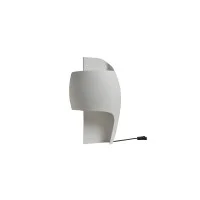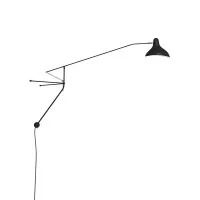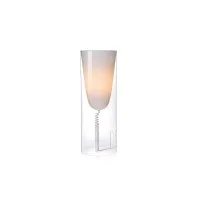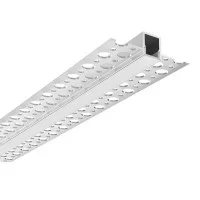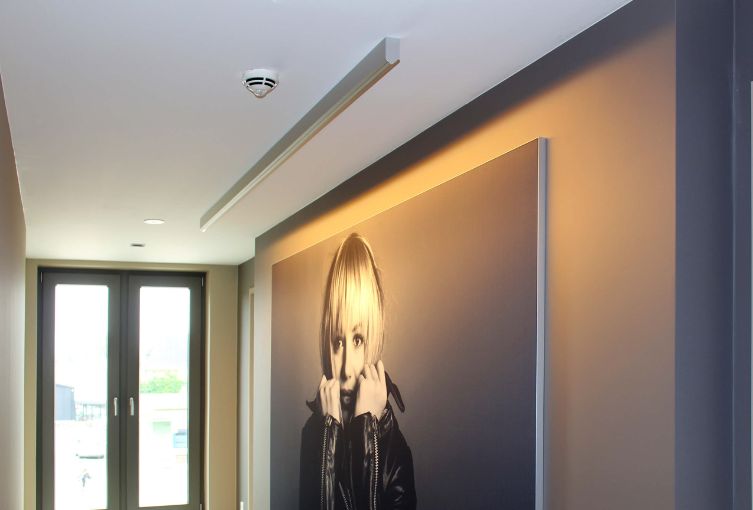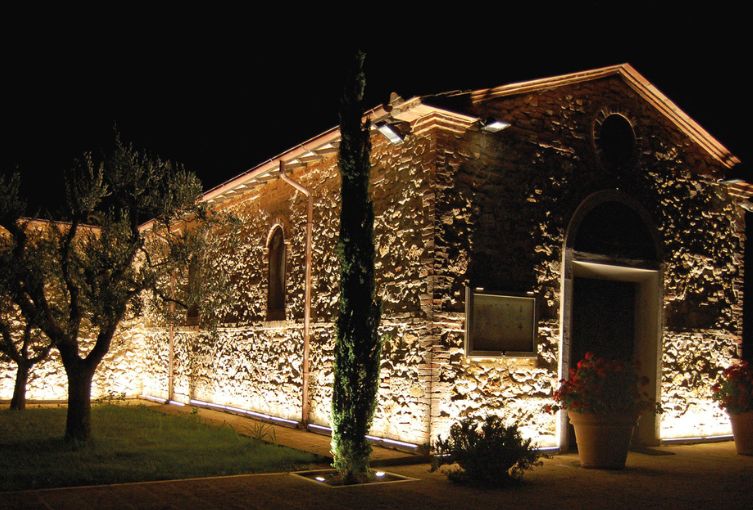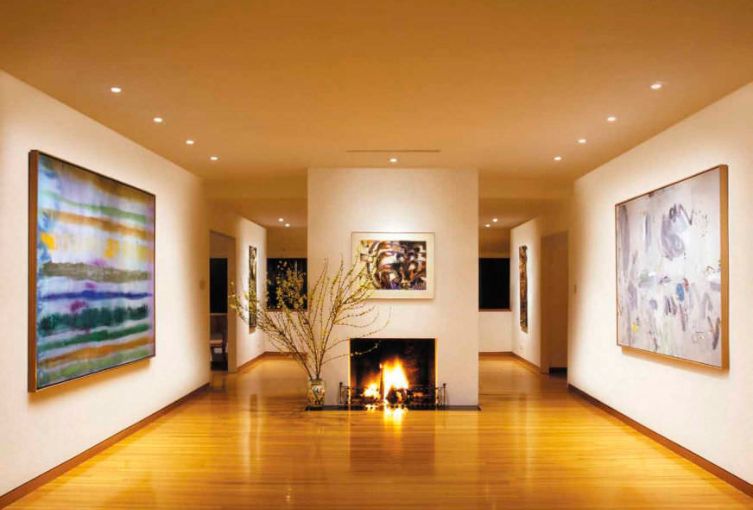What is wall washer beam: washing walls with light?
Among the most appreciated lighting techniques in recent years, especially in modern and design-oriented environments, is the so-called wall washer. In Italian, it’s often referred to as lavaggio di pareti con la luce (wall washing), a term that perfectly conveys the idea: visually “washing” a vertical surface with a uniform, even beam of light.
This effect creates a soft illumination, free of harsh shadows, capable of transforming the perception of space and enhancing any setting, whether indoors or outdoors.
While the concept may seem simple, behind the wall washer lies a precise technique of positioning and light selection, carefully studied to achieve a scenic and elegant result.
Let’s take a closer look.
The wall washer effect: evenly lighting a wall
When we talk about “washing” a wall with light, we mean evenly distributing illumination across the entire surface. Unlike a spotlight, which creates a cone of light and shaded areas, the wall washer beam envelops the wall evenly, without visual interruptions.
The result is a soft, diffused light that minimizes imperfections and highlights the aesthetic qualities of the surface.
This type of lighting is widely used in commercial environments such as shops and showrooms—where it’s important to highlight finishes—and in museums, where it illuminates artworks and walls without distracting shadows.
But wall washing is also used in private homes, especially in modern and minimalist settings, where light becomes an architectural element in its own right.
Wall washer lighting: enhancing textures and materials
One of the most interesting uses of the wall washer beam is its ability to enhance materials. Natural stone walls, exposed brick, wood, textured plaster, or raw concrete surfaces take on an entirely different character when lit evenly.
While grazing light can emphasize texture, the wall washer offers a clean, scenic view of the whole surface without overly harsh contrasts. Imagine, for example, a stone wall in a living room: with the right beam, it becomes the true focal point of the space, bringing warmth and visual depth. Or a hotel corridor clad in wood, where the wall washer highlights the continuity of the material and guides the visitor’s gaze along the path.
In this way, light is not only functional but also a decorative and architectural enhancement.
The wall washer effect makes spaces look bigger and brighter
The wall washer effect is not just aesthetic—it can actually alter the perception of space. By evenly lighting a wall, it appears wider and brighter, helping to create a sense of openness. Lighting designers often use this trick in narrow or dimly lit spaces, such as corridors, entrances, or passageways.
In a small room, wall washing can eliminate the “closed-in” feeling caused by dark or poorly lit walls, while in an open-plan space it can help define specific areas without the need for partitions. In commercial environments such as restaurants or boutiques, strategically placed wall washing makes spaces feel more welcoming and inviting.
Creating a scenic and elegant effect with wall washing
One reason the wall washer beam is so appreciated is its ability to create dramatic atmospheres. Uniform, enveloping light adds elegance and sophistication, turning a simple wall into a design feature. The choice of light color temperature can completely change the mood: warm white creates an intimate, relaxing effect—ideal for restaurants, hotels, or homes—while neutral or cool white highlights details with greater precision, perfect for museums, galleries, or exhibition spaces.
Thanks to dimmable LED lighting systems, it’s now possible to adjust brightness and shift from functional to atmospheric lighting with a simple touch.
How to achieve the wall washer effect
To achieve a good wall wash, it’s not enough to just point a spotlight at a wall—careful selection of fixtures and placement is essential. The most common solutions include recessed spotlights, track projectors, or linear LED profiles, all designed to distribute light evenly.
The distance between the light source and the wall is crucial: too close and the beam will be too concentrated; too far and uniformity will be lost. For optimal results, fixtures are usually installed at a distance calculated according to wall height and beam angle, with the light directed upwards from the floor or downwards from the ceiling.
In outdoor spaces, wall washers are often used to illuminate building façades, monuments, or gardens, creating a striking effect and improving night-time visibility. Indoors, they can be integrated into false ceilings or floor bases for a clean, minimalist finish.
Where to find wall washer solutions
Whether you’re furnishing a living room, enhancing a restaurant, or adding a scenic touch to a hotel lobby, the wall washer effect requires quality fixtures and careful design. On the Diffusione Luce website, you’ll find a wide range of wall washing solutions—from professional spotlights to custom linear LED profiles—along with expert advice to help you choose the best product for your project.
In the end, investing in well-planned lighting means improving not only the aesthetic appeal of a space but also visual comfort and the overall experience of those who use it. Wall washing is proof that when light is thoughtfully designed, it becomes a true tool of interior architecture.
Discover our range of recessed spotlights at Diffusione Luce!
Written by Alice Pruccoli
Share this content

